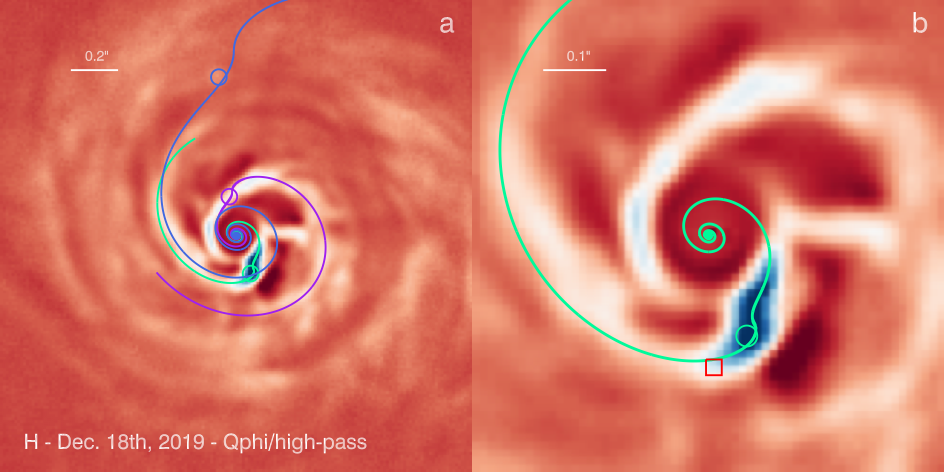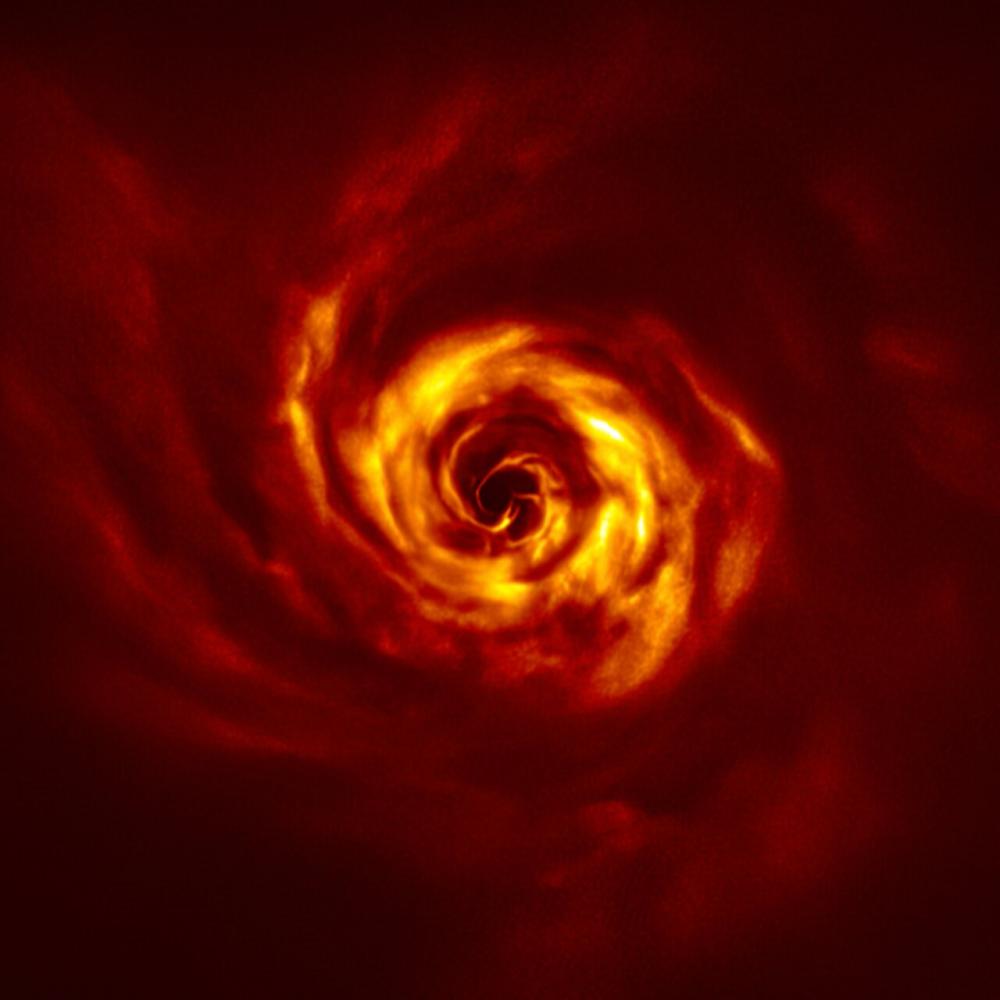Motivated by unusual features recently observed with the ALMA instrument in a proto-planetary disc around the star AB Aurigae, an international team of astrophysicists including a researcher from the Department of Astrophysics / Laboratory AIM of the CEA-Irfu of Paris-Saclay has just obtained a very sharp high-contrast image of a S-shasped sub-structure in the gaseous and dusty disc surrounding the star. This remarkable structure, unique and captured thanks to the excellent image quality of the ESO VLT SPHERE instrument, indicates the presence of a giant planet in formation, confirming a theoretical scenario of the birth of planets. Published in the journal Astronomy and Astrophysics, and subject of an ESO announcement, this work is a precursor to future research programmes on protoplanetary disks with the future ELT/METIS instrument.
On the difficulty of imaging the sites of planet formation
The planets of our solar system were formed 4.55 billion years ago in a disk made up of 99% gas and 1% dust. Despite this commonly accepted paradigm, detecting the hints of planet formation within proto-planetary disks around stars other than the Sun remains a difficult task. Beyond the observational constraints are probably hidden some more fundamental reasons. Indeed we have so far only one example of observation of planets in terminal phase of formation in the PDS70 system, a young (5.4 million years old) and nearby (113 pc) system.
Theoretical models of giant planet formation assume the existence of a zone of a few planetary radii called the "circum-planetary disc". This zone concentrates the matter flowing in the proto-planetary disc before before being partly accreted onto the forming planet. This "S" shaped zone is expected at the convergence point of 2 spiral waves in the protoplanetary disc, one going towards the star, and the other extending towards larger distances in the disc.
Zoom on a twist within the disc of AB Aurigae
Motivated by atypical characteristics of a proto-planetary disc observed with the ALMA instrument, observations with the SPHERE instrument of the protoplanetary disc around the star AB Aurigae (located at a distance of 162 pc) have revealed the presence of this S-shaped structure, showing precisely the characteristics expected of a circum-planetary disc expected in a scenario of planet formation. This result was only possible thanks to the exceptional performances in terms of angular resolution of the SPHERE instrument installed at VLT. To obtain this result, a special coronographic mode occulting the strong starlight has been used to reveal the accurate details in the surrounding proto-planetary disc.

H-band images (1.5 microns) obtained by the VLT/SPHERE instrument in differential polarimetric mode (allowing sufficient attenuation of the star to detect circumstellar structures). The 3 detected spiral waves are highlighted by green, purple, and blue lines. The "S" shaped region at the intersection of inner and outer green spirals is characteristic of a circum-planetary disc. The green circle marks the supposed position of the giant planet in formation.
A scientific case for the METIS instrument
This result is an important step toward the understanding of the sites where planets are born. Beyond the indirect detection of exo-planets, which has been extremely fruitful in the recent years thanks to many observation instruments, from space to ground-based, it is now becoming possible to obtain direct images of sites where planets are formed and derive their relevant physical properties.
The ELT/METIS project, to which CEA/IRFU is contributing to, will be a instrument capable of observing many other forming planets around other young stars. By unveiling the fine characteristics of the planet formation sites, it will provide a better understanding of the evolutionary phases of giant planets.
Contact CEA: Eric Pantin
Publication :
« Are we witnessing ongoing planet formation in AB Aurigae? A showcase of the SPHERE/ALMA synergy», A. Boccaletti, E. Di Folco, E. Pantin, A. Dutrey, S. Guilloteau, Y. W. Tang, V. Piétu, E. Habart, J. Milli, T. L. Beck, A.-L. Maire
to be published in Astronomy and Astrophysics
See : https://arxiv.org/abs/2005.09064
See also :
The ESO press release
Rédaction: Eric Pantin, Christian Gouiffès
• Structure et évolution de l'Univers
• Department of Astrophysics (DAp) // UMR AIM
• Star Formation and Interstellar Medium
• Fermi




